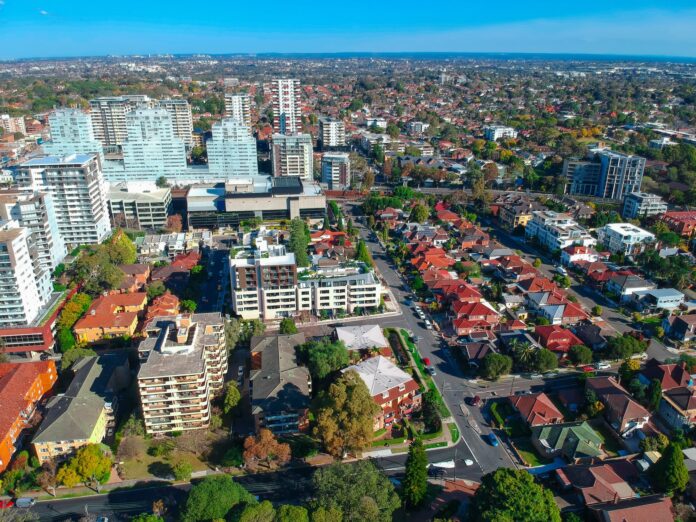[ad_1]
The impact of tax concessions such as negative gearing and the capital gains discount on property prices is ‘tiny’ in comparison to laborious planning rules, a new report has found.
Research by the Centre for Independent Studies (CIS), released Thursday, estimates planning restrictions have added more than 40% to house prices in Sydney and Melbourne, and almost 30% in Brisbane.
By comparison, tax concessions like negative gearing and the capital gains tax discount have had a ‘trivial’ effect on house prices, boosting values by between 1% and 4%.
The Centre for Independent Studies says planning restrictions have massively contributed to Australia’s housing affordability crisis. Picture: Getty
CIS chief economist and author of the report Peter Tulip, a former Reserve Bank official, said while these factors may contribute to house price growth, restrictive planning rules are by far the key driver.
“The fundamental cause is that planning restrictions limit supply, driving up prices and rent,” Mr Tulip said.
He said the argument that factors such as taxes – including negative gearing and capital gains discounts – as well as interest rates, immigration and location premiums is a bigger driver of house prices than zoning, is misunderstood.
“These other factors are not alternative explanations but complements,” he said.
“Moreover, the effect of these concessions on housing prices is tiny.”
A 1% increase in the housing stock is estimated to reduce rents and home prices by 2.5%, he said.
“The solution is for state and local governments to stop saying ‘no’ and start saying ‘yes’.
“As a society, we need to be more accepting of higher density. We need to put more weight on the interests of renters and future home buyers and less weight on the interests of nearby residents.”
Where planning reforms are working
One meaningful way to unlock more housing lies with state governments overriding local councils, the report said, as is happening in NSW.
Estimated to deliver up to 112,000 new homes, the NSW government in November announced new rules forcing councils to lift bans on building low- and medium-density housing near transport hubs, town centres and other well-located areas.
The report calls relaxed zoning restrictions to allow more housing. Picture: Getty
PropTrack senior economist Angus Moore said measures such as the reforms in NSW are already working to improve affordability in New Zealand.
“The experience in Auckland, which undertook similar changes in 2016, shows that it could ramp up housing construction activity and improve affordability,” Mr Moore said.
Under the reforms, roughly three-quarters of residential land across Auckland was upzoned, resulting in tens of thousands of additional new homes being built over the following five years.
“A study by Greenaway-McGrevy and Phillips compares areas affected by the upzoning with areas that weren’t, and finds a substantial increase in construction in affected areas,” Mr Moore said.
“They estimate that the upzoning led to an additional 21,000 new homes above and beyond the normal pace of building between 2016 and 2021.”
The homes were also well located, being close to transport and employment hubs, while rental prices were estimated be significantly lower compared to what they would have been if the upzoning hadn’t taken place.
“That’s not to say there aren’t challenges,” Mr Moore said. “Housing construction has become significantly more expensive in the past few years.
“But making it easier to build low-rise density is the right first step in building more homes in the parts of NSW that most need more housing.”
The humble granny flat may help
Closer to home, Mr Tulip said granny flat reforms in NSW in 2019 led to a five-fold increase in construction, or about 49,000 extra dwellings by 2020.
“This large increase in supply required no direct expenditure by the government — it simply involved getting out of the way,” he said.
Source: Centre for Independent Studies Housing Affordability and Supply Restrictions Report
PropTrack data shows affordable housing options, such as granny flats, are in high demand with buyers.
The keyword ‘granny flats’ recorded the second largest increase in searches on realestate.com.au over the past 12 months, behind ‘dual living’.
In an effort to unlock more housing supply, state governments have been loosening restrictions on structures like granny flats.
Granny flat reforms in NSW led to an additional 50,000 dwellings over 11 years. Picture: realestate.com.au
In late January, the WA government said planning approval will no longer be required to build compliant granny flats up to 70sqm, while planning permits will no longer be needed in Victoria to install a ‘small second home’ that meets other criteria.
Reforms in South Australia in November mean granny flats can now be rented to anyone rather than limited to immediate family members only.
[ad_2]
Source link


